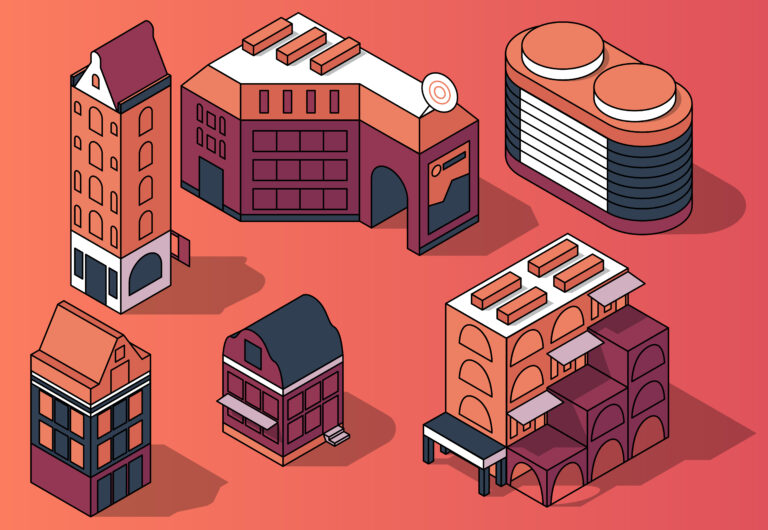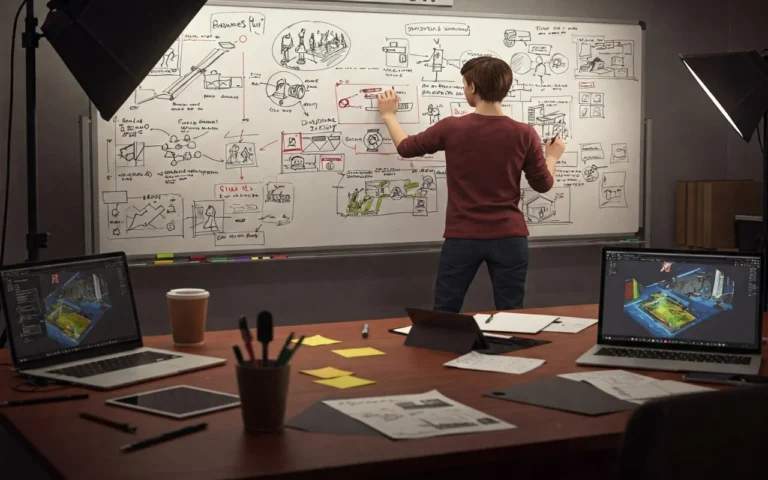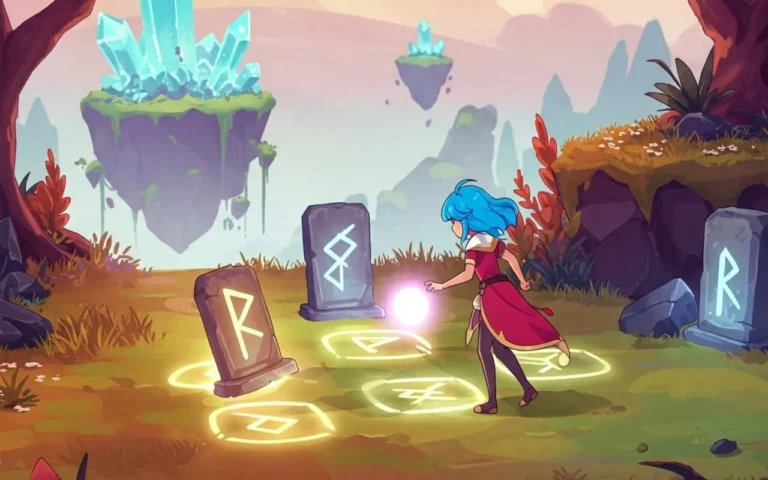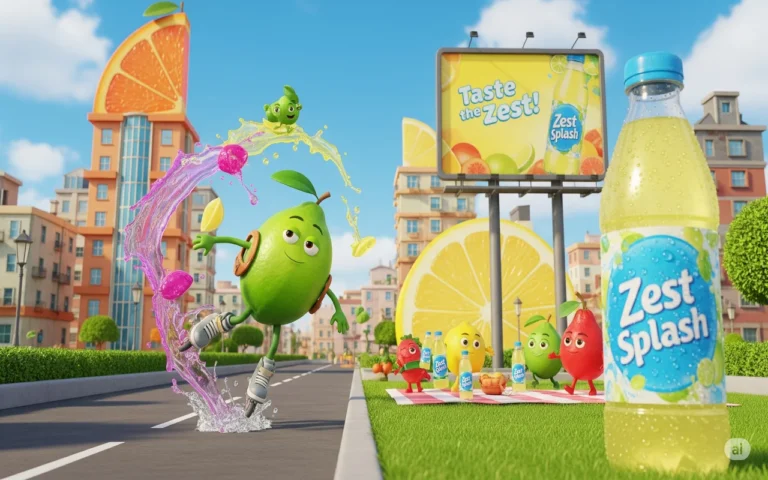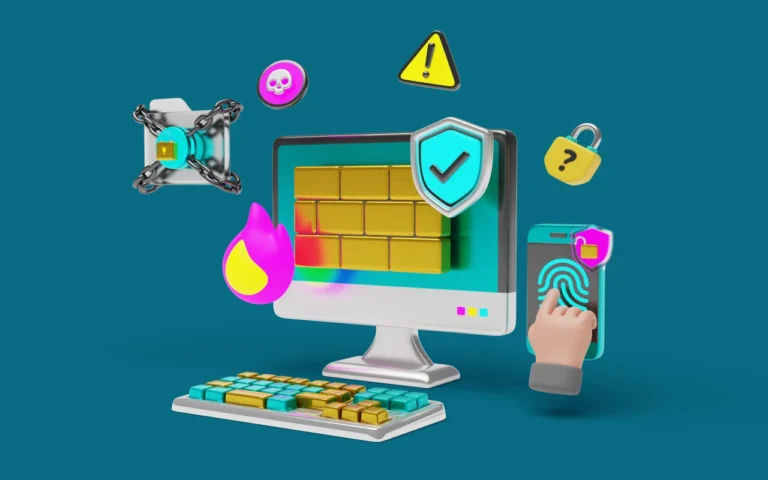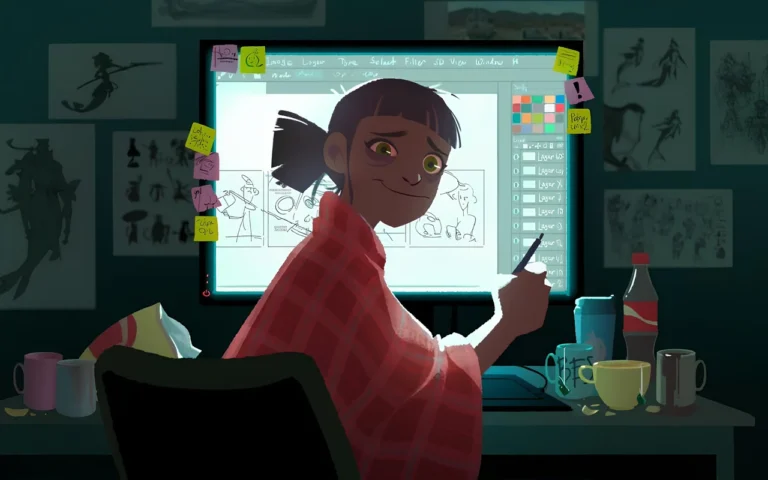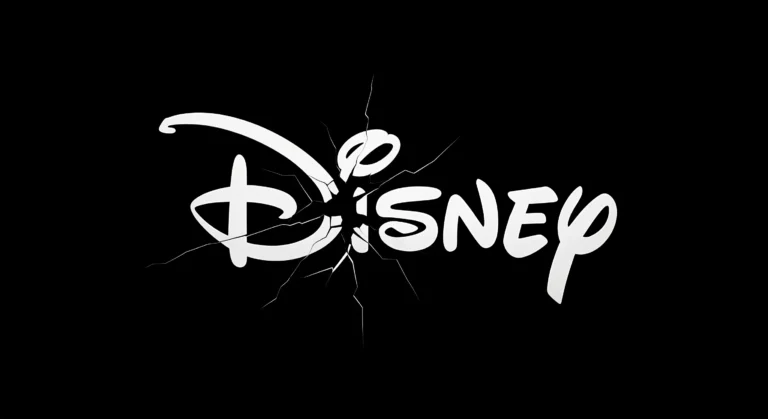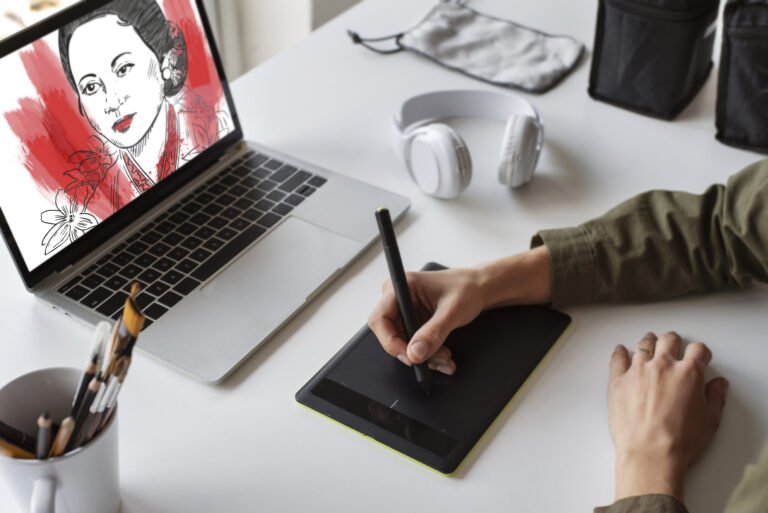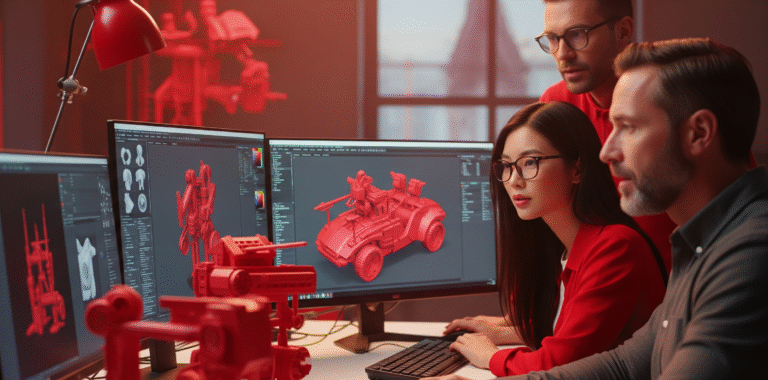The Storyboard Artist position combines digital expertise with conventional drawing techniques. These artists use cheap ($250–500) and expensive ($1000–2000) professional software tools to do their weekly heavy work of 150–200 frames.
Plus, opportunities for career growth range from entry-level jobs ($45,000) to supervisory posts ($150,000+), and there are jobs in advertising, gaming, and film. Here in this article, we will go through all of the tops and downs of a storyboard artist so you can learn more about this opportunity.
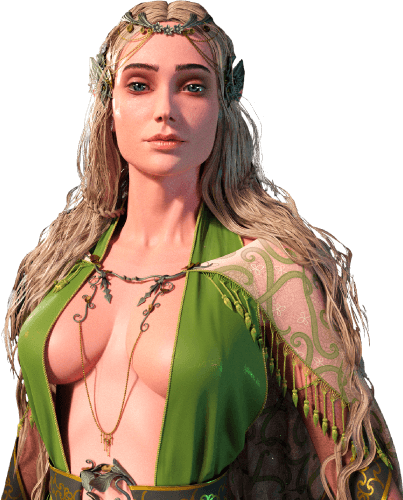
Need Animation Services?
Visit our Animation Service page to see how we can help bring your ideas to life!
What Are the Responsibilities of a Storyboard Artist?
These are 6 main responsibilities, thoroughly discussed here:
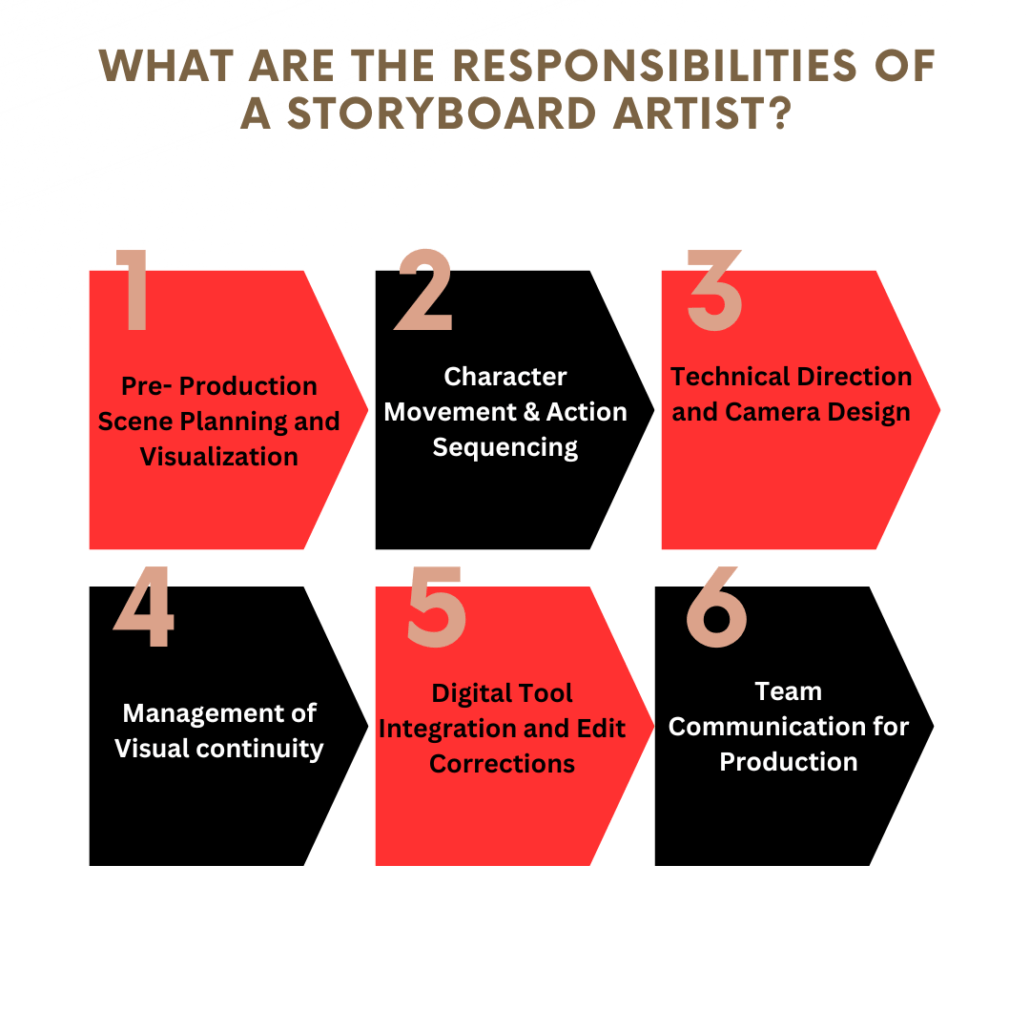
1. Pre- Production Scene Planning and Visualization
In 85% of major productions, Visual Storytelling starts 3-4 months before filming. Additionally, artists read through lines seven to eight times and divide scenes into 12 to 24 frames each. They also map every camera position and movement by sketching 150–200 frames weekly under the direction of Directors and Writers. This planning saves 30 to 40 percent on production costs by preventing costly changes during shooting.
2. Character Movement & Action Sequencing
Artists working on Character Blocking spend roughly six hours daily making forty to fifty precise designs. Moreover, 75% of these sketches include particular annotations on tempo and movement. Each episode usually needs three to four changes, and artists make fifteen to twenty versions of important scenes.
3. Technical Direction and Camera Design
Mastering shot composition is important; 90% of great artists learn to use a camera. They choose where the cameras are placed and which lenses to use for 200 to 300 frames per scene through careful panel layout work.
Artists then spend 25% of their time collaborating with cinematographers and marking measurements for every scene for 8-12 camera setups. Their planning thereby reduces the camera setup time by 45%.
4. Management of Visual continuity
Storyboard artists commit 4 to 5 hours to every project to provide visual continuity. They track 30 to 40 things per scene, such as where the characters are, where the props are, and how the lighting is. Thorough continuity management by storyboard artists reduces 65% of possible continuity problems, saving productions an average of $5,000-$10,000 every shooting day in reshoots.
5. Digital Tool Integration and Edit Corrections
Modern storyboarding techniques call for five hours a day using digital tools. Weekly 25–30 revision requests come from artists, who mostly modify their first works. In addition, they learn how to use four to five different software tools, and digital tablets are now necessary for quick changes. This digital approach accelerates changes twice as fast as more conventional techniques.
6. Team Communication for Production
The Animation Pipeline requires 8–10 weekly production meetings, and department heads must be consulted for 15–20 hours. Moreover, artists set up 20–25 presentation boards for each meeting, simplifying difficult sequences in the animation storyboard.
What Essential Skills Do You Need to Be a Storyboard Artist?
A professional Storyboard Artist needs creative, technical, and people skills. Artists typically spend 5-7 years building their core abilities while constantly learning through workshops and hands-on experience. Those who master both traditional and digital methods tend to earn higher salaries.
Hard skills include:
Advanced Visual Storytelling with strong perspective and proportion
Digital art mastery, including Script Analysis tools
Camera expertise, including lens types and movements
Understanding of Panel Layout and framing
Colour theory and lighting fundamentals
Shot Composition principles and timing
Technical drawing and architectural visualization
Digital workflow management
File organization systems
Video editing knowledge
Basic 3D modeling
Frame composition mastery
Soft skills include:
Visual storytelling and narrative interpretation
Time management (handling 20-30 frames per day)
Communication with diverse team members
Problem-solving under tight deadlines
Adaptability to project changes
Accepting and implementing feedback
Team collaboration across departments
Active listening during briefings
Creative interpretation of written content
Stress management during peak production
Cultural awareness for international projects
Presentation skills for pitching concepts
Project management capabilities
Attention to detail and continuity
Emotional intelligence in team settings
Meeting facilitation and organization
How Does the Storyboarding Process Work?
Several important steps in the storyboarding process turn written ideas into clear visual sequences. Each step builds on the last. It starts with rough ideas and ends with finished images that help the production teams do their jobs.
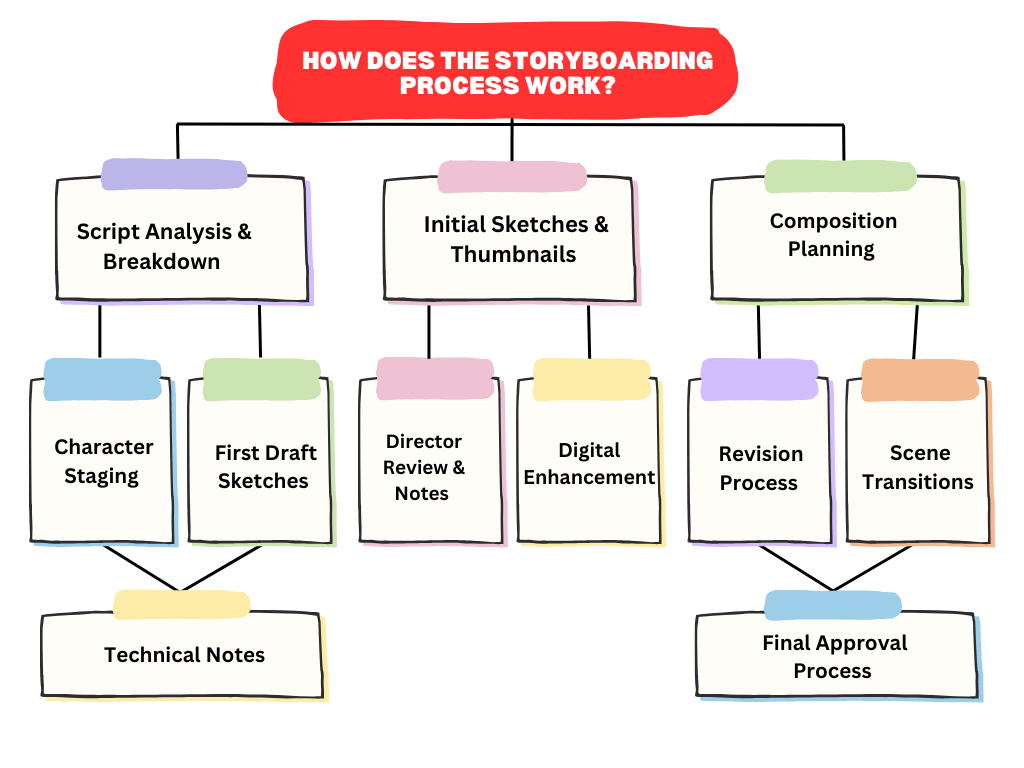
1- Script Analysis & Breakdown
Script Analysis transforms written content into visual elements, taking up about 15-20 hours of storyboarding services time. At this level, artists locate important events and action sequences that must be sketched.
- Read the script 3-4 times without notes
- Mark key story beats (usually 12-15 per scene)
- Break script into sequences (8-12 per act)
- Create shot lists (25-30 frames per scene)
- Note technical needs and effects
- Write down the director’s requests and references
- Spot potential challenges (5-7 per sequence)
2- Initial Sketches & Thumbnails
The Storyboarding Techniques begin with quick 2×3-inch sketches that show basic moves. And every day, artists make between 60 and 80 thumbnails. These preliminary drafts enable rapid concept testing.
- Draw quick gestures (30-45 seconds each)
- Sketch basic character positions
- Show camera movements with arrows
- Rough out environments (5-7 minutes each)
- Mark key action points
- Note timing indicators
- Test different approaches (3-4 versions per scene)
3- Composition Planning
Visual storytelling requires organized arrangements that direct the audience’s focus. Planning complicated scenes takes two to three hours.
- Set frame boundaries
- Mark horizon lines
- Plan background elements
- Map character movements
- Check screen direction
- Design empty spaces
- Create depth (3-5 layers)
4- Character Staging
The Panel Layout places figures so they have the most effect. Each busy scene takes 45 to 60 minutes. This guarantees that the characters’ locations reflect their connections.
- Position main characters (2-3 options)
- Plan interaction areas
- Mark entrances and exits
- Match eye directions
- Space out character groups
- Plan background actions
- Show emotional moments through positioning
5- First Draft Sketches
Every day, the Storyboard Artist completes 8–12 refined sketches that include all planning aspects and illustrate how scenes will flow and time out using visual storytelling in animation.
- Draw detailed character poses and expressions
- Get proportions and scale right
- Add environment details and props
- Show lighting directions
- Note camera movements
- Mark timing per action
- Include production notes
6- Director Review & Notes
Working with Directors and Writers takes 4 to 6 hours per sequence, with 15 to 20 notes per scene. There are also two to three review rounds that focus on both creativity and usefulness.
- Plan review sessions (2-3 hours each)
- Show boards in sequence
- Record all feedback instantly
- Sort notes by importance
- List needed changes
- Confirm specific updates
- Set revision deadlines (48-72 hours)
7- Digital Enhancement/Cleanup Using
Artists invest 6–8 hours in every sequence to enhance clarity; this step also standardizes visibility, shading, and lines.
- Scan sketches (300-600 DPI)
- Clean digital lines
- Balance contrast
- Add consistent shading
- Perfect frame layouts
- Save backups
- Prepare revision files
8- Revision Process
Artists work on 15 to 20 versions of the animation pipeline’s original boards daily. It also takes about a quarter of the total time to make all of the parts.
- Organize changes by difficulty
- Make revision schedule
- Update frames
- Track versions
- Get quick feedback
- Keep original files
- Log all changes
9- Scene Transitions
Each change scene takes two to three hours of work on shot composition. Artists also make 5 to 8 shots for each change to keep the flow smooth.
- Find key transition moments
- Plan connecting elements
- Sketch transition ideas
- Try different styles
- Connect movements
- Keep scenes consistent
- Time transitions
10- Technical Notes
Panel layout and character-blocking details take three to four hours for each sequence because artists have to add notes for the production teams.
- Mark camera moves
- List lens details
- Note lighting needs
- Mark effects spots
- Write timing notes
- List equipment needs
- Add safety notes
11- Final Approval Process
Several teams need to look over the animation pipeline, which will take 5 to 7 working days. Also, between 6 and 8 different department heads have to sign off before delivery can start.
- Put all sequences together
- Show to department heads
- Get final notes
- Make quick fixes
- Collect approvals
- Note any conditions
- Create approval papers
What Are the Different Types of Storyboards?
Storyboards come in various forms, each serving different needs in the production pipeline. Let’s see the different types of storyboard:
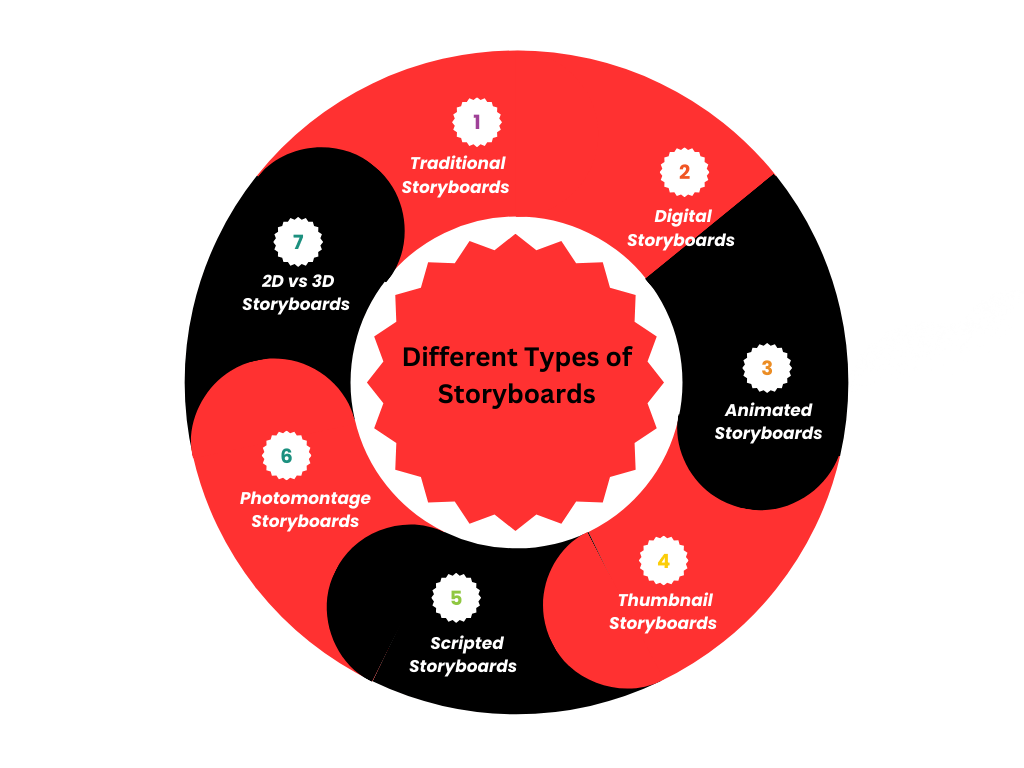
1- Traditional Storyboards
The Storyboard Artist creates hand-drawn frames that tell the visual story. Moreover, these boards give immediate feedback and let ideas develop naturally during planning.
- 20-30 frames daily
- 6×8 inch frames
- 3-4 minutes per rough sketch
- 15-20 minutes per detailed frame
- 200-300 frames per movie sequence
- Most include camera notes
- Many productions start this way
2- Digital Storyboards
Digital tools are used for precise, easily changeable frames in modern Panel Layout work, and professional software platforms increase the flexibility of Shot Composition.
- 40-50 frames daily
- 5-7 layers per frame
- 10-15 minutes for new frames
- 5-7 minutes for changes
- Common in production
- Frames use multiple layers
- Quick revision time
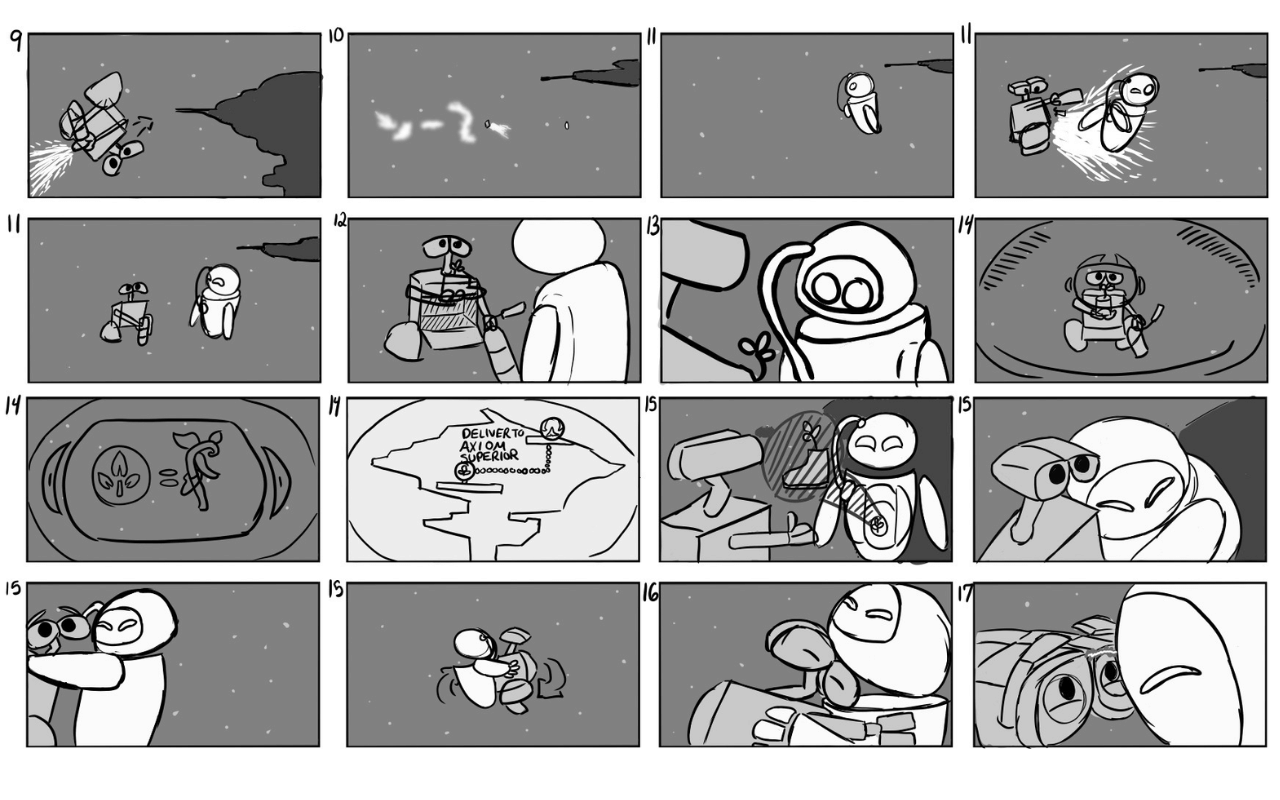
3- Animated Storyboards (Animatics)
Visual storytelling comes to life with the help of time and character blocking. In addition, these help teams see the pace and add simple music.
- 15-20 seconds of animation daily
- 24 frames per second
- 2-3 hours per 30-second piece
- 8-12 key frames per scene
- Saves on final animation costs
- Often includes sound
- 4-5 revision rounds
4- Thumbnail Storyboards
Initial steps in storyboarding techniques involve making quick sketches to test out visual concepts. These small drawings also make it easier to work together with directors and writers because they quickly show a number of choices.
- 80-100 thumbnails daily
- 2×3 inches standard size
- 30-45 seconds per sketch
- 3-4 versions per key moment
- 15-20 minutes for important scenes
- Directors often prefer this method
- Much faster than full-size boards
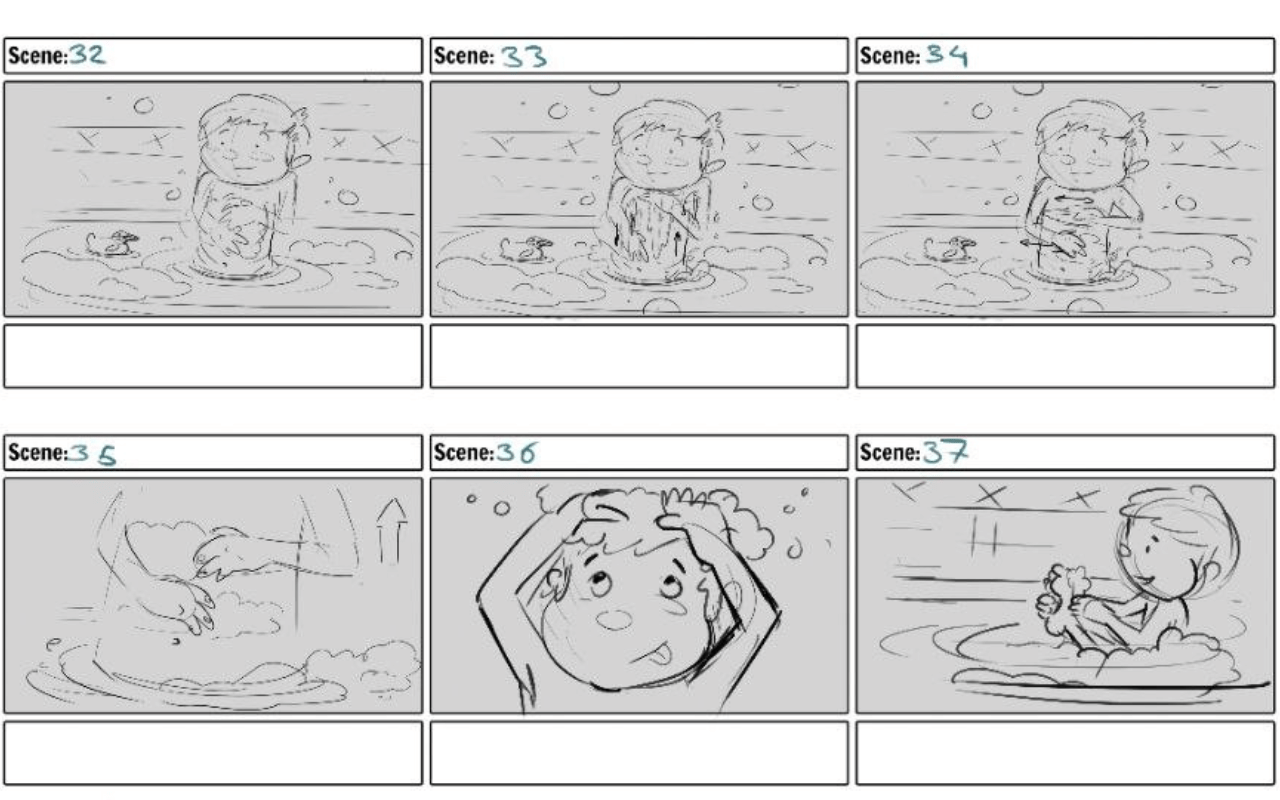
5- Photomontage Storyboards
The visual storyteller mixes pictures and computer work to show scenes. Furthermore, software tools help in creating precise shot representations, which are particularly helpful for advertisements.
- 10-15 frames daily
- Highly accurate to final shots
- 4-6 hours per complex scene
- 25-30 photo elements per frame
- Fewer client revisions needed
- Common in commercial work
- 3-4 versions per key scene
6- 2D vs. 3D Storyboards
Different styles have different panel layouts. As an example, shot composition in 2D is more about artistic aspects, while 3D is more about scientific accuracy.
2D Key Data:
- 30-40 frames daily
- 2-3 hours per detailed frame
- Most storyboards use this
- 15-20 minutes per revision
- Quick initial creation
3D Key Data:
- 8-12 frames daily
- 4-6 hours per detailed scene
- Very technically accurate
- 30-45 minutes per revision
- Precise spatial relationships
7- Scripted Storyboards
The Storyboard Artist puts together pictures and words to give the whole scene meaning. On top of that, script analysis helps them combine technical notes and conversation.
- 15-20 frames daily
- 50-75 words per frame
- 4-5 technical notes per frame
- 25-30 minutes per frame
- Often includes dialogue
- Used in dialogue-heavy work
- 3-4 text revisions per scene
Where Are Storyboards Used in Different Industries?
Storyboards help teams plan and carry out visual projects in a lot of different areas, from big-budget movies to making apps for phones. No matter if they’re making movies, video games, or teaching material, everyone uses storyboarding methods in their own way.
- Film & Television: Visual storytelling helps major studios plan complex sequences. Moreover, productions with a budget of $15-20 million rely on collaboration with directors and writers to execute scenes efficiently.
- Video Game Development: Game art studios employ storyboard artist teams for cutscenes and gameplay. Additionally, big games need 3-5 artists working through a 2-3 year development cycle.
- Advertising: Global agencies use panel layouts for TV commercials and digital campaigns. Furthermore, a 30-second commercial needs 12-15 detailed frames for approval and production guidance.
- Animation: Animation studios employ large teams working 12-18 months through the animation pipeline. Plus, shot composition guides help complete thousands of story panels for major animated features.
- E-Learning & Educational Content: Educational companies use storyboarding techniques to plan videos and interactive content. Subsequently, each learning module needs 25-40 frames to map out lessons.
- User Experience Design: Tech companies use Software Tools to visualize user journeys. Major app projects typically include 50-75 frames showing key interactions.
What Tools and Software Do Storyboard Artists Use?
Modern storyboard artists need a combination of traditional art supplies and cutting-edge digital tools to create their work. Every tool an artist uses, from simple pencils and sketchbooks to professional software packages, is useful for a different part of the creative process and makes it easier to make their ideas come to life.
Traditional Tools for Storyboard Artists
The storyboard artist needs several essential tools for their work:
- Drawing Tablets (Wacom Intuos Pro): Professional tablet with pressure sensitivity – $250-400
- Light Box (Artograph LightPad): For tracing and consistency – $80-150
- Professional Pencils (Staedtler/Faber-Castell): Full set from 6H to 6B – $30-50
- Marker Sets (Copic/Prismacolor): For colour work – $200-300 for 24 colours
- Quality Sketchbooks: Professional paper for Storyboarding Techniques – $15-25 each
- Technical Pens: Precise line work tools – $50-80 per set
- Erasers and Corrections: Complete set – $20-30
- Rulers and Guides: Basic set – $40-60
- Storage Solutions: Cases and organizers – $100-150
- Drawing Desk: Adjustable surface – $200-500
Digital Software Requirements
The animation pipeline requires specific software:
- Storyboard Pro: Complete animation software – $999/year
- Adobe Creative Suite: Digital art and animation – $600/year
- Clip Studio Paint Pro: Great for panel work – $50 once
- FrameForge: 3D previsualization – $399 once
- Storyboarder: Basic animation features – Free
- Procreate (iPad): Digital painting app – $9.99 once
- TVPaint Animation: Professional 2D work – $599 once
- Boards: Team collaboration platform – $20-49/month
- Adobe Premiere Pro: Video editing – Part of Creative Suite
- Office Tools: For Software Tools communication – $6-12/month
How to Build a Career as a Storyboard Artist?
There is a clear road from entry-level to leading jobs on the way to becoming a professional storyboard artist. Beginner artists usually start with basic skills and smaller projects. As they gain experience and skill, they move on to more difficult work and team leadership roles.
Entry Level Storyboard Artist (0-2 years)
New artists help more experienced ones, make rough sketches, and work on simple scenes. Also, a lot of them start out working alone or in small companies. The pay is between $45,000 and $55,000. In addition, they need to know how to draw simple shapes, understand perspective, and use software.
Junior Artist (2-4 years)
They can handle whole scenes on their own and work on medium-sized tasks with visual storytelling. In addition, most of the time, they work for ad firms or cartoon companies. The pay for TV ads and teaching material is between $55,000 and $70,000 per year.
Mid-Level Artist (4-7 years)
They help lead smaller projects and teach new artists how to use advanced software tools. Plus, they work a lot of the time for big game or cartoon teams. Jobs in movies and video games pay between $70,000 and $90,000.
Senior Artist (7-10 years)
They are Masters of animation pipeline and are in charge of big projects and work closely with directors. Jobs at big companies like Disney and Pixar pay between $90,000 and $120,000 for cartoon movies and blockbusters.
Lead Artist (10+ years)
They’re in charge of areas and make important artistic decisions. The best studio jobs pay between $120,000 and $150,000 a year to work on various projects.
Supervisor (15+ years)
The person in the top job is in charge of many teams and projects. Pay runs from $150,000 to $200,000 or more for leading a team and developing visuals generally.
What Are the Latest Trends in Storyboarding?
New tools and ways of working change the way artists do their jobs all the time in the field of storyboarding. With tools that use AI and the ability to work with virtual reality, new technologies are making storyboarding faster and more creative.
- Storyboarding with AI Help: New software tools now have AI helpers like Midjourney and DALL-E. These tools also save artists 12 to 15 hours a week on boring jobs, which lets them focus on being creative.
- VR Storyboarding: Apps like Quill and AnimVR use advanced storyboarding techniques to let artists make things in 3D space. Also, by planning better, big companies save between $25,000 and $35,000 every day.
- Real-Time Game Engine Integration: Game engines make it easier for the animation pipeline to do work that changes all the time. Artists make dynamic boards that show lights and different angles at the same time. Also, companies now only need 5 days from idea to approval instead of 14 days.
- Mobile-First Storyboarding: With the help of professional tablet applications, artists can create anywhere. Plus, this movement gives you an extra 7–8 hours of work each week. Artists now finish 15 to 20 frames every day, up from 8 to 10 frames per day in the past.
- Automated Panel Generation: New tools create transition panels between keyframes. Basic routines now take 5–6 hours less per minute of information because of this.
- Cloud-Based Asset Libraries: Characters and settings can be shared digitally to help with visual storytelling. Using the same things for multiple projects saves teams 20 to 25 hours each while keeping things consistent.
- Interactive Feedback Systems: Direct feedback on storyboard frames is possible with modern systems. This cuts the time it takes to get feedback from 72 hours to 24 hours. Because of these methods, projects are finished two to three weeks earlier.
Conclusion
Storyboard artists use planning to save production costs by bridging the gap between concept and execution across industries. Also, digital tools have cut approval times in half and doubled daily output. New methods make it easier for teams to work together, but artistic skills are still needed.
